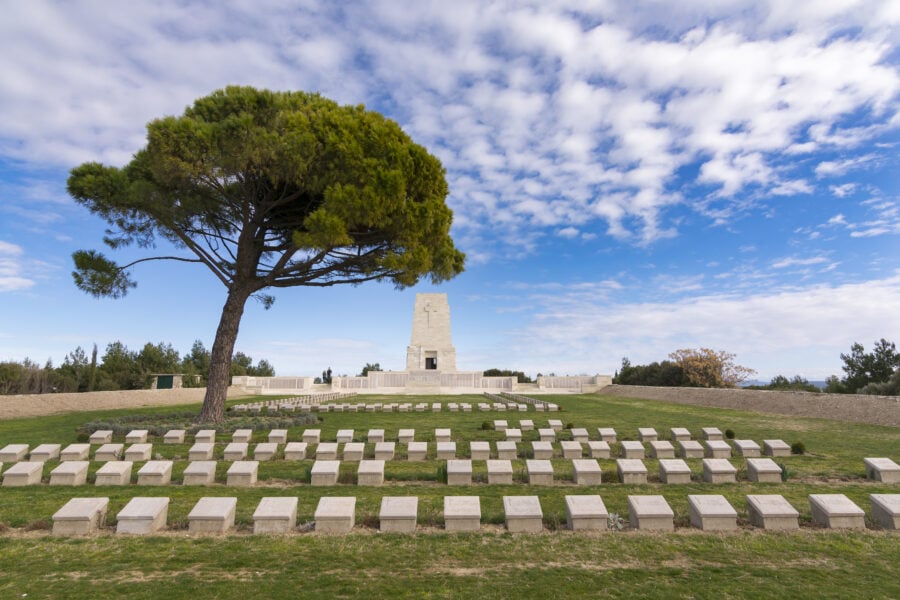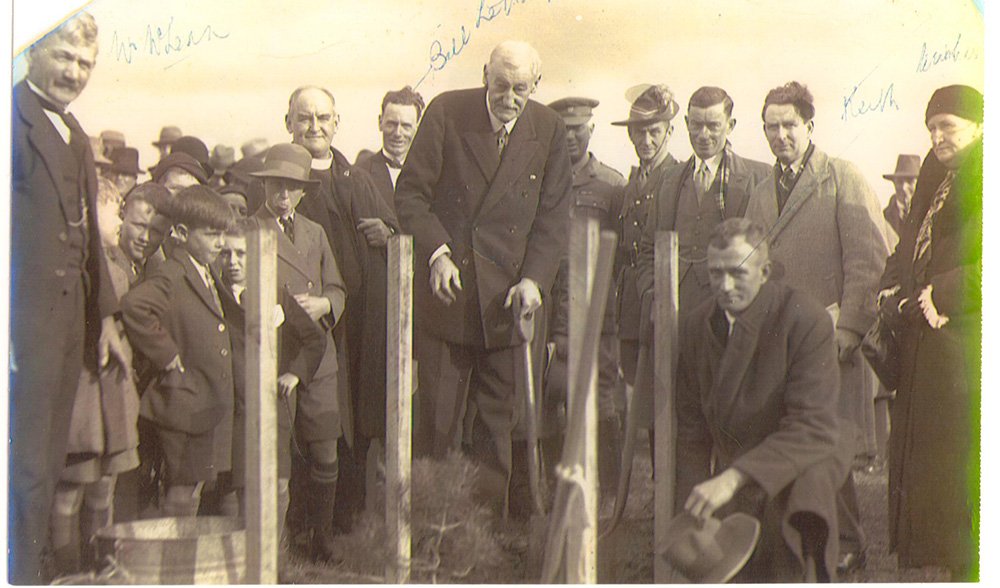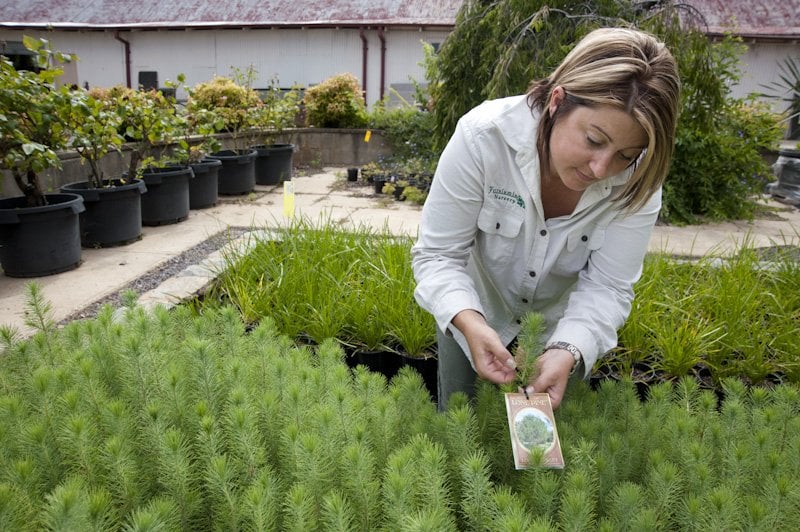Lone Pine seeds grown into a living memorial

Turkish troops had felled nearby pines to fortify their trenches and only a solitary tree remained on the afternoon of 6 August 1915, when the Battle of Lone Pine began. It was to be one of the bloodiest actions of the Gallipoli campaign and one that still sits in the minds of many as significant in Australia’s history.
Standing on a rise known as Lone Pine ridge, that remaining tree was blown to pieces as fighting intensified. But not before becoming the namesake of the battleground and a poignant symbol of the enduring Anzac spirit.
It took the Anzacs only 20 minutes to capture the main Turkish trench. During the following four days, the Turks unsuccessfully tried to recapture the area. More than 2000 Australians, and an estimated 5000-7000 Turks, died.

After the battle, at least two diggers salvaged pine cones from Lone Pine Ridge. Sergeant Keith McDowell, of the 23rd Battalion, collected a cone from the remains of the Lone Pine itself. He carried it in his rucksack as a memento for the duration of the war. On his return to Australia, he gave it to his aunt Emma Gray near Warrnambool, Victoria. A relative recalled him saying: “Here, Auntie, you’ve got a green thumb; see if you can grow something out of this.”
She planted some of the seeds 12 years later. Five sprouted and four survived. In 1933 one of these was planted at the Shrine of Remembrance in Melbourne. The other three were also planted in Victoria, at Warrnambool Botanic Gardens and The Sisters, near where Emma’s family lived, and at Wattle Park, in Melbourne.
From seeds, history grows
Lance Corporal Benjamin Charles Smith, of the 3rd Battalion, also collected several cones from the branches used to cover trenches and sent them home to his mother in Inverell, NSW. The seeds then sat in a drawer for 13 years before she finally sowed some of them and successfully raised two seedlings, one of which was planted in Inverell. The second was planted in 1934 by Prince Henry, the Duke of Gloucester, at the Australian War Memorial (AWM) in Canberra. It stands there today, some 20m tall despite suffering severe storm damage in December 2008.

This fast-growing, heat- and drought-tolerant tree is an Aleppo pine (Pinus halepensis). It’s not found naturally on the Gallipoli Peninsula, so the branches used in trenches – from which LC Smith collected cones – may have been imported from elsewhere in the Mediterranean.
Trees originating from the pine cone Sgt McDowell brought home, including the one at the Shrine of Remembrance, have been identified as the native Turkish pine (Pinus brutia). At first it was considered a sub-species of the Aleppo pine, but it is now more usually classified as a distinct species.
New Zealand botanist Mike Wilcox and Australian forestry scientists David Spencer and Roger Arnold identified the different tree species growing at the Shrine of Remembrance and the AWM. Mike doesn’t think the taxonomic change affects the Lone Pine’s symbolic significance. “The important thing is that a tree was planted in memory. It represents the bond between Australia and New Zealand – our shared experience,” he says. “It’s also a symbol of friendship between us and the Turkish people.”
Seeds from both the Shrine of Remembrance and AWM trees have been successfully propagated by the Melbourne Legacy Club and the Yarralumla Nursery in Canberra, respectively. They have been presented as living war memorials to schools and ex-service and other organisations throughout Australia and New Zealand.
Lone pine war descendants
Carmel McConnell, of Melbourne Legacy, says that about 500 trees have been successfully grown from the 1933 pine at the Shrine of Remembrance. These have been planted in annual ceremonies on Anzac and Remembrance days. “However, the seed stock from the original Lone Pine descendants is diminishing ever year as the surviving trees age,” Carmel says. The original Shrine of Remembrance pine was badly damaged by a storm in 2006 and replaced by one of its own seedlings. But it may be some time before the new Shrine memorial tree produces cones, she says.
Yarralumla Nursery manager Michael Kidd says that the nursery started collecting seed from the AWM tree in the late 1940s, after WWII ended, and as the significance of Anzac Day increased. “In the beginning we only propagated a few a year, but since the 90th anniversary [of Gallipoli] in 2005 interest has increased and we now grow over 500 each year,” Michael says. “We regularly collect seeds from the original tree, as well as from a group of younger trees that we grew from the original about 25 years ago.”

Other AWM pine seedlings have travelled further afield. In 1990 two Aleppo pines from Yarralumla Nursery were planted by war veterans at the Lone Pine Cemetery, Gallipoli, to mark the 75th anniversary of the battle. They replaced a solitary tree planted there in the 1920s as homage to the original Lone Pine, which had been identified in 1987 as a stone pine (Pinus pinea).
CSIRO forestry scientists have also been taking grafts from the AWM tree since the early 1980s. These progeny have been distributed to such places as RSL headquarters in Canberra; Royal Park, Launceston; the Australian Army Corps base at Puckapunyal, Victoria; and the Turkish Embassy, Canberra.
Regardless of what species the Lone Pine was, its symbolic importance as a representation of our nation’s tenacity and fortitude remains. Lest we forget.

